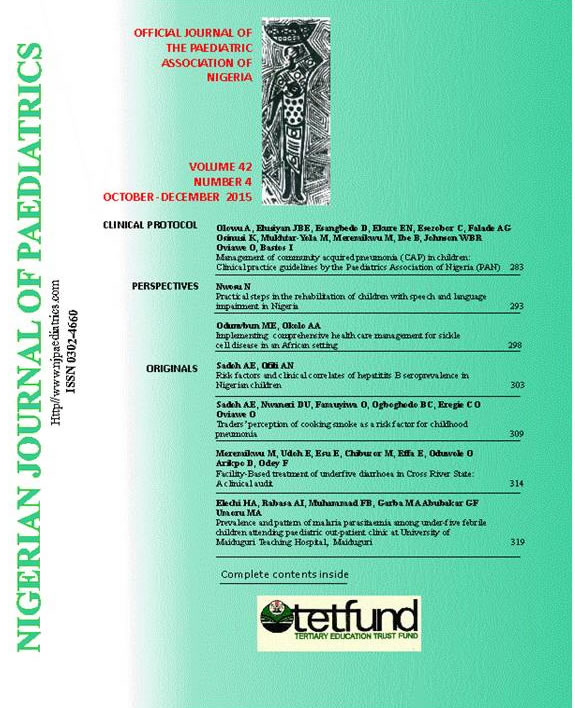Prevalence and pattern of malaria parasitaemia among under-five febrile children attending paediatric out-patient clinic at University of Maiduguri Teaching Hospital, Maiduguri
Abstract
Abstract:
Background: Malaria has remained a major public health problem in Nigeria with the under-five aged children and
pregnant women being the most affected. The local epidemiological profile of the disease is dynamic owing to the continuous
variation in the various determinants and hence the need for periodic re-evaluation. We aim to determine the prevalence of malariaparasitaemia among the under -five aged children and the effect of various determinants.
Material and Method: In this cross-sectional study, 433 out- patients aged below 5 years with fever or history of fever in the
previous 72hours were enrolled. Relevant information was obtained and recorded using a questionnaire. Thick and thin films
were prepared from a finger or heel prick for each of the patients and subjected to microscopy.
Result: The prevalence of malaria parasitaemia was 27.7%. Age, sex, nutritional status, socio- economic class, temperature at
presentation as well as ownership of insecticide treated nets had no significant effect on the prevalence of malaria (p>0.05). Only
P. falciparum was seen in all the positive slides. The parasite density was generally low with 48.3% having parasite densities below
100/μl and only 7.5% had parasite density of ≥1000/μl. Parasite density increased significantly with increasing age (p=0041). Nutritional status as well as other studied factors had no significant effect on parasite density (p>0.05).
Conclusion and Recommendation: Prevalence of malaria infection was high in the population studied. It is characterized by low density parasitaemia and hence the need to interpret negative results with caution. Age, gender, socio-economic and nutritional status, temperatureat presentation as well as ownership of ITN had no significant effect on prevalence of malaria parasitaemia. There is need to strengthen and scale up various malaria control programs while ensuring proper implementations of programs and activities through effective monitoring and evaluation.
Keywords: Prevalence, pattern, Malaria, Parasitaemia, under-five febrile children, outpatient clinic
Downloads
Published
Issue
Section
License
This is an open-access journal, and articles are distributed under the terms of the Creative Commons Attribution 4.0 License, which allows others to remix, transform, and build upon the work even, commercially, as long as appropriate credit is given to the author, and the new creations are licensed under identical terms

